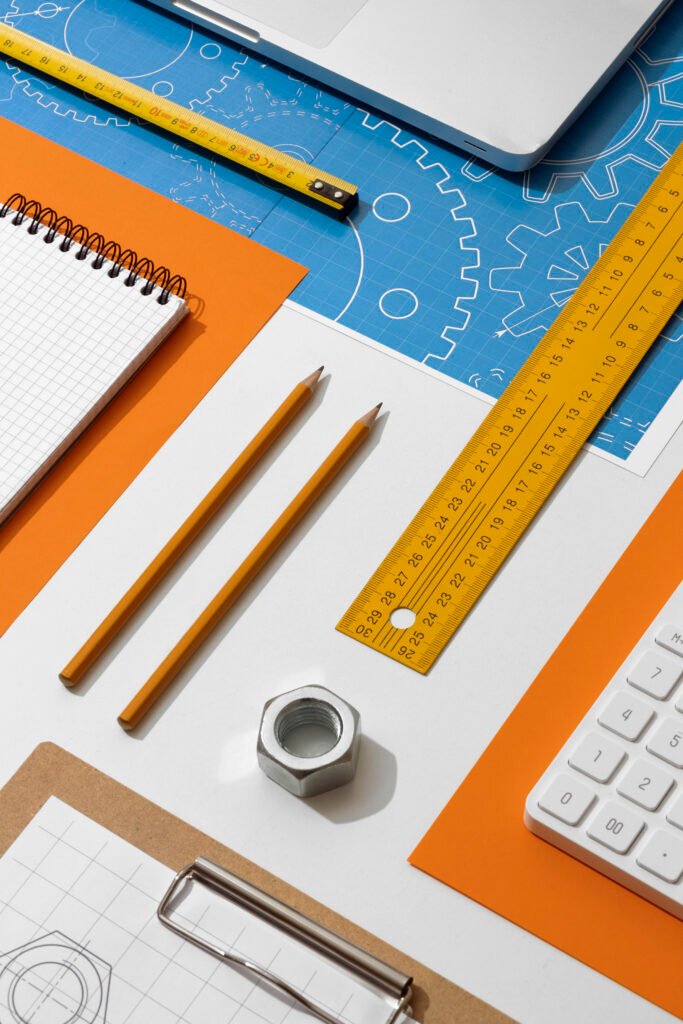The second term of Junior Secondary School 3 (JSS 3) mathematics covers critical concepts that not only enhance students’ analytical skills but also provide a foundation for more advanced topics in the future. This comprehensive guide elaborates on key mathematical topics that students will encounter in their second-term lessons, offering easy-to-understand explanations, detailed examples, and practical exercises to help students master the subject.
1. Simultaneous Linear Equations – Graphs of Linear Equations, Compilation of Tables of Values, Graphical Solution of Simultaneous Linear Equations in Two Variables
What are Simultaneous Linear Equations?
Simultaneous linear equations involve two or more equations with two or more variables. The goal is to find the values of the variables that satisfy all the equations simultaneously.
Graphs of Linear Equations:
Linear equations are represented graphically as straight lines on the Cartesian plane. Each equation can be graphed by plotting points that satisfy it.
- Example: Plot the graph of the equation y = 2x + 3.
- To plot, create a table with various x values (e.g., x = 0, 1, 2), and calculate the corresponding y values:
- When x = 0, y = 2(0) + 3 = 3.
- When x = 1, y = 2(1) + 3 = 5.
- When x = 2, y = 2(2) + 3 = 7.
- Plot the points (0, 3), (1, 5), and (2, 7) on the Cartesian plane and draw a straight line through them.
- To plot, create a table with various x values (e.g., x = 0, 1, 2), and calculate the corresponding y values:
Compilation of Tables of Values:
A table of values helps determine the coordinates of points that can be plotted on a graph.
- Example: For the equation y = x + 4, you can create a table of values:
- When x = 0, y = 4.
- When x = 1, y = 5.
- When x = 2, y = 6.
- Continue for several values of x to create a table of corresponding y values.
Graphical Solution of Simultaneous Linear Equations:
The graphical solution of simultaneous equations involves plotting the graphs of both equations and finding the point where the two lines intersect. This point represents the solution to the system of equations.
- Example: Solve the system of equations:
- y = 2x + 3
- y = -x + 5
- Graph the two equations. The point of intersection is (1, 5), meaning x = 1 and y = 5 is the solution.
Reading Assignment:
- Study how to plot linear equations and understand how graphs represent solutions to simultaneous equations.
- Practice creating tables of values for different linear equations.
Evaluation Questions:
- Plot the graph of the equation y = 3x – 2 and find its solution for x = 2.
- Solve the system of equations graphically:
- y = x + 2
- y = 2x + 1
2. Simultaneous Linear Equations – Solving by Substitution, Solving by Elimination, Word Problems
Solving by Substitution:
This method involves solving one equation for one variable and substituting it into the other equation.
- Example: Solve the system of equations using substitution:
- x + y = 7
- x – y = 1
- Solve the first equation for x: x = 7 – y.
- Substitute into the second equation: (7 – y) – y = 1.
- Simplify: 7 – 2y = 1 → 2y = 6 → y = 3.
- Substitute y = 3 into the first equation: x + 3 = 7 → x = 4.
- The solution is x = 4 and y = 3.
Solving by Elimination:
This method involves adding or subtracting equations to eliminate one variable.
- Example: Solve the system of equations using elimination:
- 2x + y = 9
- x + y = 4
- Subtract the second equation from the first: (2x + y) – (x + y) = 9 – 4.
- Simplify: x = 5.
- Substitute x = 5 into the second equation: 5 + y = 4 → y = -1.
- The solution is x = 5 and y = -1.
Word Problems:
Simultaneous equations can also be solved using substitution or elimination methods when they arise from word problems.
- Example: A car travels at 60 km/h and a bus at 80 km/h. After 3 hours, the bus is 60 km ahead of the car. How far has the car traveled?
- Let x represent the distance traveled by the car, and y represent the distance traveled by the bus.
- Set up the equations:
- x = 60 * 3 (distance = speed * time)
- y = 80 * 3.
- Solve using substitution or elimination.
Reading Assignment:
- Practice solving simultaneous equations using substitution and elimination.
- Work through real-life word problems to understand how to apply these methods.
Evaluation Questions:
- Solve the system of equations by substitution:
- 3x + 2y = 16
- x – y = 1
- Solve by elimination:
- 4x + 3y = 10
- 2x – y = 3
3. Variations – Direct Variation, Inverse Variation, Joint Variation, Partial Variation
Direct Variation:
In direct variation, two quantities are related such that as one increases, the other increases proportionally.
- Example: If y varies directly as x, the equation is y = kx, where k is the constant of variation.
- If y = 6 when x = 3, then k = 6 / 3 = 2, so y = 2x.
Inverse Variation:
In inverse variation, as one quantity increases, the other decreases proportionally.
- Example: If y varies inversely as x, the equation is y = k/x.
- If y = 8 when x = 2, then k = 8 * 2 = 16, so y = 16/x.
Joint Variation:
Joint variation involves more than one variable. A quantity varies directly with the product of two or more variables.
- Example: y varies jointly as x and z. The equation is y = kxz.
Partial Variation:
Partial variation includes both a direct variation and a constant term.
- Example: y = kx + b, where b is a constant.
Reading Assignment:
- Study different types of variations and practice solving problems involving direct, inverse, joint, and partial variation.
Evaluation Questions:
- If y = 10 when x = 5, find the constant of variation for the equation y = kx.
- Solve for y when x = 2 and k = 16 in the equation y = k/x.
4. Construction – Bisection of Line Segment, Construction and Bisection of Angles, Construction of Triangles and Quadrilaterals
Bisection of Line Segment:
The bisection of a line segment involves dividing the segment into two equal parts.
- Procedure: Using a pair of compasses and a ruler, draw arcs from both endpoints of the line segment and mark their intersection. Draw a line through the intersection points, which bisects the segment.
Construction and Bisection of Angles:
To bisect an angle, construct arcs from both arms of the angle and mark the intersection. Then, draw a line from the vertex through this intersection.
Construction of Triangles and Quadrilaterals:
To construct triangles and quadrilaterals, given specific measurements (e.g., side lengths, angles), use a ruler and compass to draw the shapes accurately.
Reading Assignment:
- Study the steps for constructing geometrical figures and practicing construction with a pair of compasses and ruler.
Evaluation Questions:
- Construct a line segment of 6 cm and bisect it.
- Construct an equilateral triangle with side lengths of 5 cm.
5. Similar Shapes – Similar Figures, Similar Triangles, Enlargement and Scale Factor
Similar Figures:
Two figures are similar if they have the same shape but not necessarily the same size. The corresponding angles are equal, and the corresponding sides are proportional.
Similar Triangles:
Two triangles are similar if their corresponding angles are equal, and the ratios of their corresponding sides are equal.
- Example: If triangle ABC is similar to triangle DEF, then ∠A = ∠D, ∠B = ∠E, and ∠C = ∠F, and the sides satisfy the condition AB/DE = BC/EF = CA/FD.
Enlargement and Scale Factor:
Enlargement is the transformation that increases the size of a figure while maintaining its shape. The scale factor is the ratio of the new size to the original size.
- Example: If the scale factor is 2, the new dimensions are twice the original dimensions.
Reading Assignment:
- Review the concept of similar figures and scale factors.
- Practice solving problems involving enlargement and finding scale factors.
Evaluation Questions:
- Prove that two triangles are similar by comparing their corresponding angles and sides.
- If the scale factor is 3, find the new dimensions of a rectangle with side lengths 2 cm and 4 cm.
6. Similar Shapes – Scale Factor in Calculating Lengths, Areas, and Volumes of Similar Figures
Scale Factor in Lengths:
The length of a similar figure can be determined by multiplying the original length by the scale factor.
- Example: If the original length is 5 cm and the scale factor is 3, the new length is 5 * 3 = 15 cm.
Scale Factor in Areas:
The area of a similar figure is proportional to the square of the scale factor.
- Example: If the scale factor is 2, the area of the enlarged figure is 2² = 4 times the original area.
Scale Factor in Volumes:
The volume of a similar figure is proportional to the cube of the scale factor.
- Example: If the scale factor is 3, the volume of the enlarged figure is 3³ = 27 times the original volume.
Reading Assignment:
- Study how scale factors apply to the calculation of lengths, areas, and volumes.
- Solve problems involving similar figures with known scale factors.
Evaluation Questions:
- Calculate the area of a square with side length 4 cm if the scale factor is 5.
- Calculate the volume of a cube with side length 3 cm if the scale factor is 2.
7. Measurement of Solids – Area of Solids, Total Surface Area of Cube and Cuboid, Curved Surface Area of Cylinder and Cone, Volume of Solids, Relationship Between Volume and Capacity
Area of Solids:
The area of solids, particularly the total surface area, is the sum of the areas of all the faces of the solid.
Total Surface Area of Cube and Cuboid:
- Cube: The total surface area of a cube is 6a², where “a” is the length of a side.
- Cuboid: The total surface area of a cuboid is 2(lw + lh + wh), where l, w, and h are the length, width, and height.
Curved Surface Area of Cylinder and Cone:
- Cylinder: The curved surface area of a cylinder is 2πrh, where r is the radius and h is the height.
- Cone: The curved surface area of a cone is πrℓ, where r is the radius and ℓ is the slant height.
Volume of Solids:
- Cube: The volume of a cube is a³.
- Cuboid: The volume of a cuboid is lwh.
- Cylinder: The volume of a cylinder is πr²h.
- Cone: The volume of a cone is 1/3πr²h.
Relationship Between Volume and Capacity:
Volume measures the amount of space inside a solid, and capacity is the amount of liquid a solid can hold. The two are directly related.
Reading Assignment:
- Study the formulas for surface areas and volumes of different solids.
- Work through problems involving the calculation of volume and surface area.
Evaluation Questions:
- Calculate the total surface area of a cube with side length 4 cm.
- Find the volume of a cylinder with radius 3 cm and height 6 cm.

